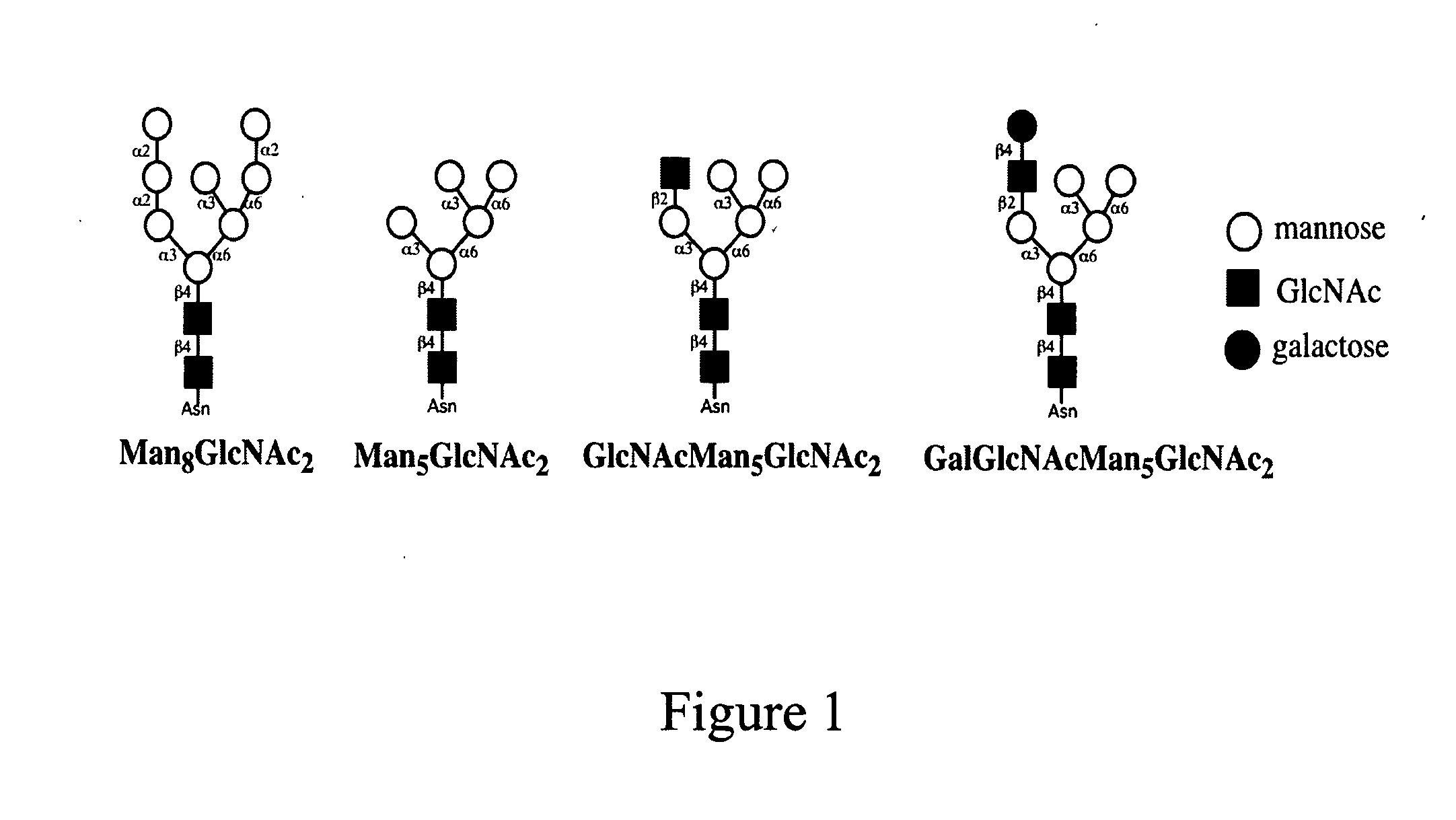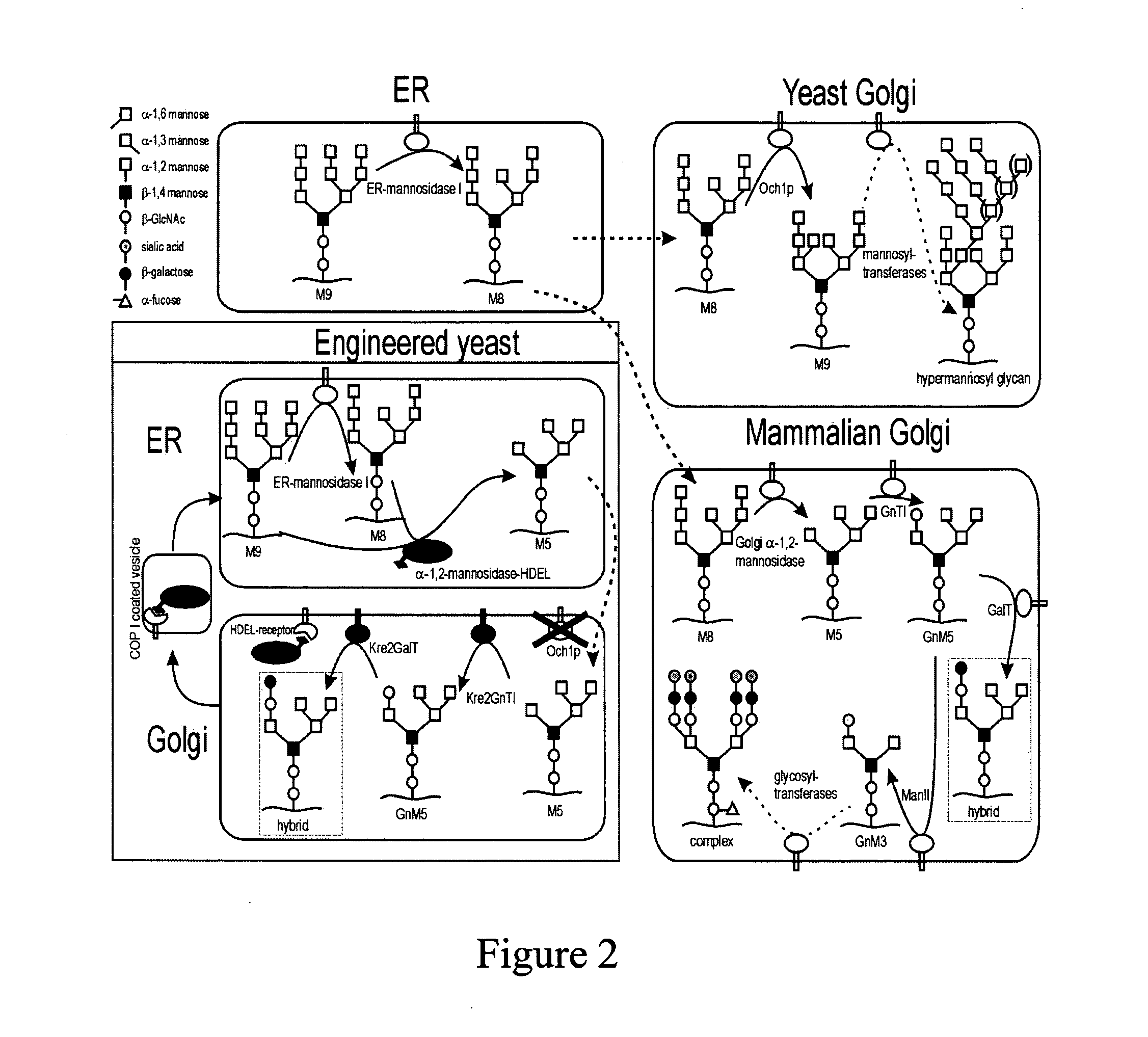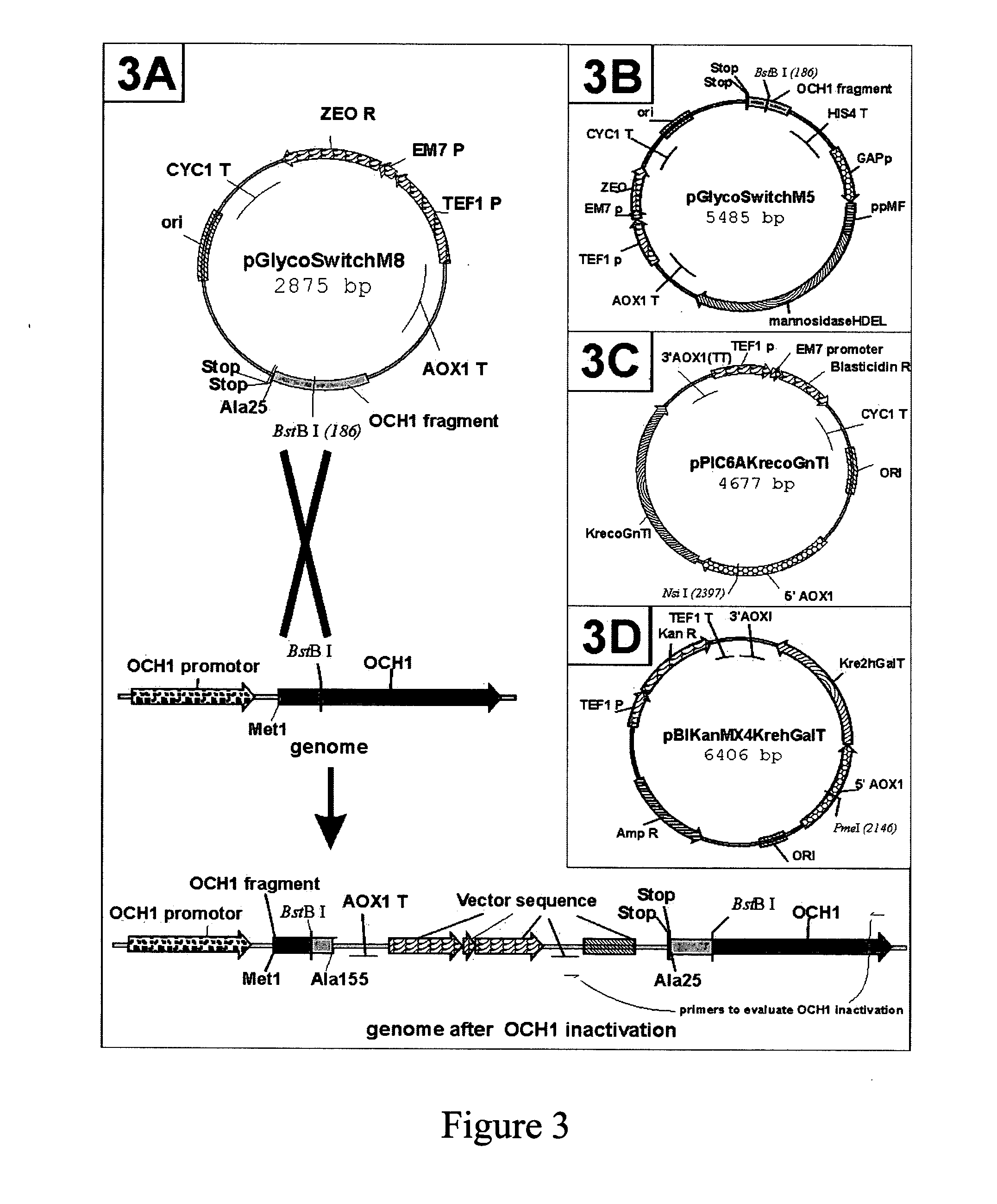Modification of protein glycosylation in methylotrophic yeast
a technology of methylotrophic yeast and protein glycosylation, which is applied in the direction of enzymology, peptides, transferases, etc., can solve the problems of affecting the production and medical applications of some therapeutic glycoproteins, and affecting the immunogenicity of outer chain glycosylation
- Summary
- Abstract
- Description
- Claims
- Application Information
AI Technical Summary
Benefits of technology
Problems solved by technology
Method used
Image
Examples
example 1
Materials and Methods
Vector Construction and Transformation
[0110] A Pichia pastoris sequence was found in the GenBank under Accession No. E12456 (SEQ ID NO: 2) and was described in Japanese Patent Application No. 07145005, incorporated herein by reference. This sequence shows all typical features of an α-1,6-mannosyltransferase and is most homologous to the S. cerevisiae OCH1, thus referred to herein as the Pichia pastoris OCH1 gene.
[0111] The full ORF of the Pichia pastoris OCH1 gene was isolated by PCR using genomic DNA isolated from strain GS115 as template and the following oligonucleotides: 5′GGAATTCAGCATGGAGTATGGATCATGGAGTCCGTTGGAAAGG (SEQ ID NO: 4), and 5′GCCGCTCGAGCTAGCTTTCTTTAGTCC (SEQ ID NO: 5). The isolated OCH1 gene was cloned in pUC18 to obtain plasmid pUC18pOCH1, and the identity of the OCH1 gene sequence was confirmed by sequencing.
[0112] Plasmid pGlycoSwitchM8 (2875 bp, SEQ ID NO: 6, graphically depicted in FIG. 3A) contains a fragment of the Pichia pastoris OCH...
example 2
Inactivation of OCH1
[0120] Disruption of the genomic Pichia pastoris OCH1 gene was achieved by single homologous recombination as follows. The plasmid, pGlycoSwitchM8 (FIG. 3A), was generated as described in Example 1, which included base pairs No. 73-467 of the Pichia pastoris OCH1gene, preceded by two in-frame non-sense codons to avoid read-through from potential earlier translation start sites in the vector. This fragment contained a centrally located BstB I site useful for linearization of the vector before transformation, and was linked at its 3′ end to the AOX1 transcription terminator sequence. This vector would duplicate the OCH1 sequence present in the vector upon integration by single homologous recombination into the genomic OCH1 locus of Pichia. As a result, the OCH1 gene in the Pichia chromosome was replaced with two Och1 sequences. The first OCH1 sequence encoded a protein product of 161 amino acids long at maximum (of which 6 amino acids resulted the from the sequenc...
example 3
Expression of ER Retained Mannosidase-HDEL
[0124] To further humanize the N-glycans of Pichia pastoris, ER retained Trichoderma reesei α-1,2-mannosidase-HDEL was expressed in the och1 strain. For easy conversion of a Pichia pastoris expression strain, a nucleotide sequence coding for Trichoderma reesei α-1,2-mannosidase-HDEL was inserted into the och1 inactivation vector. The resulting combination vector was called pGlycoSwitchM5, the construction of which is described in Example 1.
[0125] Strain GS115 was transformed with linearized pGlycoSwitchM5. Correct integration of the vector was confirmed by PCR analysis. N-glycans of mannoproteins from the transformants were analyzed by the DSA-FACE method. The glycan profile revealed a homogenous Man5GlcNAc2 peak (FIG. 4, panel 4). Integration of the Man5GlcNAc2 peak and of all the small peaks above the detection limit of this method (S / N>3) in the size area of 5 up to 25 glucose units revealed that this higher-eukaryote type high-mannose ...
PUM
| Property | Measurement | Unit |
|---|---|---|
| structure | aaaaa | aaaaa |
| stability | aaaaa | aaaaa |
| molecular weight | aaaaa | aaaaa |
Abstract
Description
Claims
Application Information
 Login to View More
Login to View More - R&D
- Intellectual Property
- Life Sciences
- Materials
- Tech Scout
- Unparalleled Data Quality
- Higher Quality Content
- 60% Fewer Hallucinations
Browse by: Latest US Patents, China's latest patents, Technical Efficacy Thesaurus, Application Domain, Technology Topic, Popular Technical Reports.
© 2025 PatSnap. All rights reserved.Legal|Privacy policy|Modern Slavery Act Transparency Statement|Sitemap|About US| Contact US: help@patsnap.com



